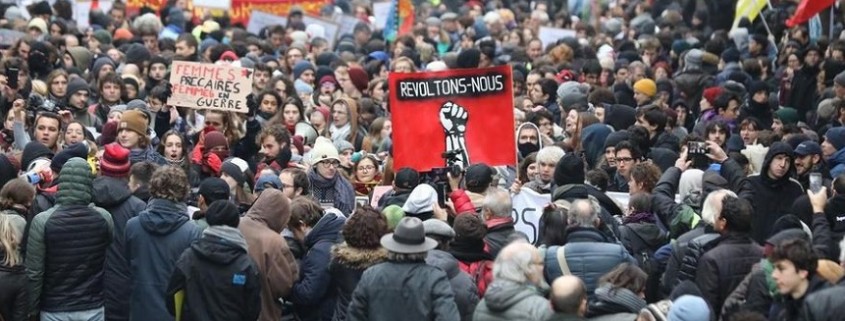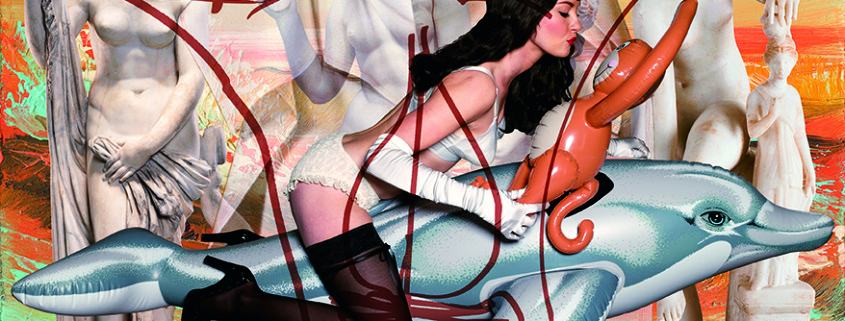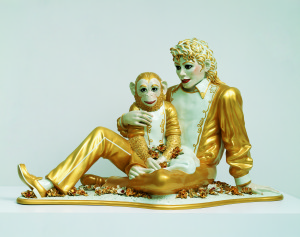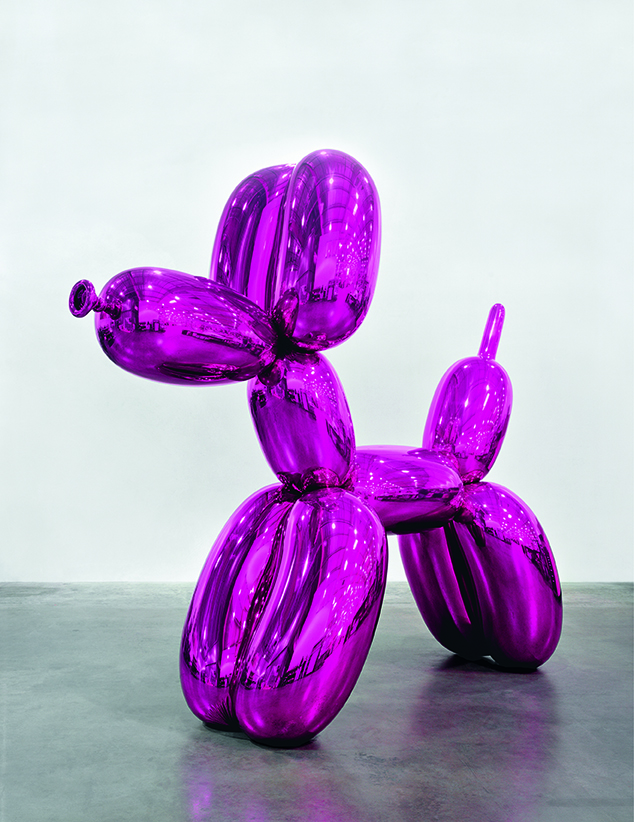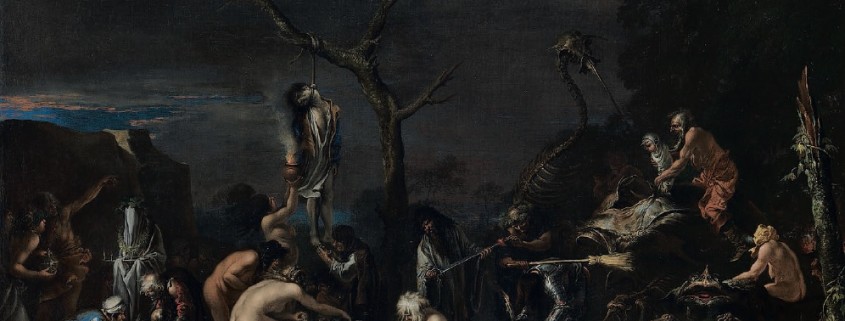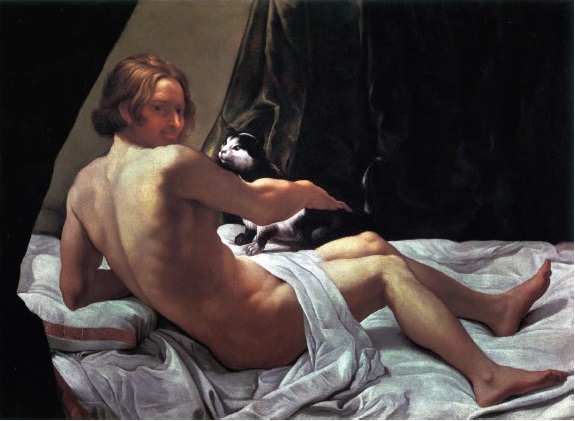Les Misérables: Understanding the French Culture of Discontent
/0 Comments/in Travel and Culture /by Parisian GuideWhen the French get angry, the world gets wind of it.
For the last week, bus and train drivers have been on strike, paralyzing the public transportation system. Police officers, teachers, civil servants, hospital staff and many other workers have joined in protests over President Emmanuel Macron’s plans to reform the country’s complex pension system.
Demonstrations in France are nothing new. Every Saturday for more than a year, French people of all ages and from all walks of life from all areas have donned high-visibility yellow vests to demonstrate their general unhappiness.
Even before the “yellow vest” movement, which started in November 2018 as pushback against proposed fuel tax hikes and exploded into the expression of a general sense of injustice, disgruntled farmers would regularly rumble up the highways in tractors to dump perfectly edible vegetables on the steps of the French Parliament, or truckers would launch an “Operation Escargot,” driving at a snail’s pace to block major roads.
Puzzling as it may seem in a country that appears to have so much going for it — fine wines, haute cuisine, high fashion and roughly 1,000 different cheeses — the French are Les Misérables. As author Sylvain Tesson told France Inter radio recently: “France is a paradise inhabited by people who believe they’re in hell.” (Continue reading)
JEFF KOONS: A POPULAR AND CONTROVERSIAL ARTIST
/0 Comments/in News and Updates, Travel and Culture /by Parisian GuideVisit the Centre Pompidou and view iconic artworks by one of the most famous yet controversial pop artists, Jeff Koons. This is the first comprehensive retrospect in Europe of his 35-year career which has made him one of the most influential contemporary artists of the postwar era.
The exhibition brings together 100 sculptures and paintings which constitute his most recognizable works in a chronological narrative, allowing visitors to understand Koon’s diverse output ranging from porcelain reproductions of mundane everyday objects to paintings of homemade pornography.
Jeff Koons is not without his share of controversy. Supporters describe his artwork as pioneering due to his use of cutting edge fabrication techniques while some critics label his pieces as ‘kitsch’ or self-merchandising. This certainly has not stopped him from becoming one of the wealthiest in his field. His Balloon Dog (orange) recently fetched a hefty $58.4 million at auction making it the most expensive work by a living artist.
Whether it be mere curiosity over the mind-blowing price of some pieces or a sense of wonder over how a life-size aluminum blow-up toy looks so real you’ll swear you could pop it with a pair of scissors – it should be intriguing to see collections by a creator described by Bernard Blistène, director of the Musée National d’Art Moderne, as “the last of the Pop artists”.
Opening hours
Open every day: 11 am – 9 pm, except Tuesdays
Late opening on Thursday, Fridays and Saturdays until 11 pm
Closed on Monday and public holidays
Exhibit runs until 27 April 2015
Admission charges
Full-price: 11-13€ (according to season)
Reduced rate: 9-10€
A UNIQUE EXHIBIT ON THE BAROQUE UNDERWORLD
/0 Comments/in Events and Activities, Kids and Parenting, Travel and Culture /by Parisian GuideThe Petit Palais is currently hosting an exhibit which has never been presented in France before. Unlike the usual idealistic view of Rome, the display depicts a more down-to-earth, somber vision of the Roman underworld – its vice, poverty and excess.
An initial exhibition was presented last autumn at the Villa Medici in Rome. For the Paris showcase, it is bolstered by new prestigious loans from the National Gallery (London), Nationalmuseum (Stockholm), National Gallery of Ireland, Rijksmuseum (Amsterdam), the Louvre, Galleria Borghese, Palazzo Barberini and even some private collections. This year, around 70 exceptional paintings will evoke the clandestine and shady side of the Italian capital.
Expect to be treated to works by Caravaggio, the Bamboccianti and the principal Italianate landscape painters. Among those represented in the display are works by French painters Valentin de Boulogne, Simon Vouet, Nicolas Tournier, and Claude Lorrain along with other European artists (including Pieter Van Laer, Gerrit van Honthorst, Jan Miel from Northern Europe and Bartolomeo Manfredi, Lanfranco, Salvator Rosa and Jusepe de Ribera of the south).
What exactly do these painters have in common? They found their source of inspiration in the crude world of poverty and violence, drinking and gambling. Having frequented the more sleazy areas of the city late at night, they chose to depict a more realistic vision of Rome rather than idealize its beauty. Interestingly, many of the North European artists belonged to a secret society called the ‘Bentvueghels’ meaning ‘birds of a feather’ in Dutch. They likewise considered Bacchus, god of wine and artistic inspiration, as their patron.
Lastly, the Petit Palais worked with Italian opera director and scenographer Pier Luigi Pizzi to put forward Rome’s duality during that period giving a contrasting sense of a melancholic underworld against the splendor of the papal palaces.
Opening hours
From Tuesday to Sunday : 10 am – 6 pm
Late opening on Friday until 9 pm
Closed on Monday and public holidays
Exhibit runs until 24 Mail 2015
Admission charges
Full-price: 11€
Reduced rate: 8€
Related Activites:
On the 13th of May, an artist photographer will be present at the museum studio to immortalize your visit to the Baroque Underworld. Using the museum’s costumes, accessories and a little creativity, have fun posing for an unforgettable portrait souvenir of yourself or your Baroque family. (Available upon reservation 72 hours prior to the photo session and an activity fee of 7€ per child and 9€ per adult)
THE VOCABULARY OF FRENCH DAIRY
/0 Comments/in Food and Shopping, Travel and Culture /by Mary CampbellJust when you think you are starting to make real progress with your French, a new level of detail emerges: In France even the animals speak a different language. It’s true, mes amis – it isn’t quack quack. Here, ducks go coin coin! Parisian pups don’t woof, they ouaf; and the glorious French cow meuuuhhhhs.
Cooking a family recipe using the equivalent French ingredient is not any easier. Here we will focus on the mainstay of dairy or produits laiter: milk and butter.
The French take their dairy seriously. Entire aisles are dedicated to the stuff, both in the refrigerated section and on the shelves. The milk and cream that is stocked in grocery stores is UHT, which stands for ultra haute temperature or ultra-high temperature pasteurization. Fresh milk is immediately blasted with a super high heat then cooled, which sterilizes the milk and allows it to keep at room temperature for three months or more. However, once UHT milk or cream is opened, it must be kept in the fridge and lasts as long as fresh milk or cream does.
Once you have decided which side of the aisle you are shopping on, then you need to wade through the elaborate French vocabulary surrounding the various kinds of milk:
Entier
whole milk, denoted by a red cap or label
Demi-écrémé
skim milk, denoted by a blue cap or label
Écrémé
non-fat milk, denoted by a green cap or label
These are the most important terms to master. But if you would like to plunge further into the nuances of French milk here are a few more:
Cru
raw or unpasteurized, milk in its purest form and with the most pungent flavor
Microfiltré
milk that has been purified with an ultra-fine filter which removes 98% of the bacteria and treats the milk without heating, leaving its natural flavor intact
Bio or Biologique
indicates that the product is organic
Lait fermenté or Lait Ribot
Fermented milk is popular in North Africa. Lait Ribot is a traditional drink from Brittany. Both correspond roughly to buttermilk and are perfect for all your pancake-making and chicken-frying needs.
If you are looking for a milk-like non-dairy drink or boisson,then swing by your local organic shop where you will find:
Lait de riz – rice milk
Lait de soja – soy milk
Lait d’amande – almond milk
Lait d’avoine – oat milk
Pass Me The Butter, Please
The French slather their morning baguette with butter and pack it into their delicate pastries. But you won’t find it at the lunch or dinner table. In restaurants, the bread basket arrives with your meal and is meant to help you sop up all those lovely French sauces on your plate and to accompany any cheese or charcuterie. The one exception to this rule is oysters, which are served with rye bread and very salty butter.
Note these useful vocabs:
Beurre doux – unsalted butter
Beurre demi-sel – salted butter
Beurre salé – very salty butter, typically from Brittany and reserved for the strong of heart
Beurre aux cristaux de sel – semi-salted butter which is spiked with crunchy flakes of sea-salt
If you have your kitchen now fully stocked with butter and dairy, here is a wonderful use for it: a creamy chilled dessert infused with vanilla and sitting on a bed of toasty caramel.
Oeufs au Lait
Serves 4 to 6 people
500ml whole milk – lait entier
Half a vanilla bean (or a spoonful of vanilla extract)
4 egg yolks and 2 whole eggs
150g white sugar – sucre semoule
1 spoonful of water
Bring the milk and vanilla bean to a boil and then turn off the heat and let that delicious vanilla flavor infuse the milk. In the meantime, beat the eggs and sugar together until the mixture is a pale straw color. A minute or two with a whisk should do it. Pluck out the vanilla bean from the milk, scrape the seeds into the milk and toss the pod. If you are using vanilla extract, heat the milk and pour in the extract, no need to let the milk sit.
Now slowly pour in the warm milk mixture into the eggs while mixing constantly with your other hand. If you don’t mix while you pour you’ll end up with scrambled eggs.
In a clean pan, pour the sugar and the spoonful of water. Set it on medium high on your stove and let it bubble and cook until it is a uniform caramel color. Then pour the hot caramel into a pan or several small ramekins to coat the bottom. You can now pour the egg mixture on top of the caramel and bake in a water bath for 20 minutes, the mixture should be firm but wobbly in the center when you shake it. Let the oeufs au lait cool for at least an hour before diving in with a spoon.
TOP PICKS ON KIDS’ ACTIVITIES IN PARIS
/0 Comments/in Events and Activities, Kids and Parenting, Travel and Culture /by Parisian GuideEven kid-friendly cities such as Paris can be no match for today’s livewire kids. When you’ve done your limit of the usual places (Jardin de Luxembourg or Paris Plage), it can quickly leave one wondering what next weekend’s agenda will be.
Here are our top picks of kids’ activities that will keep the children busy, whether they fancy a bit of fossil hunting or just playtime outdoors.
Muséum National d’Histoire Naturelle
This place promises to be more than just another day at the museum. Start with the Grande Galerie d’Evolution for a fascinating discovery of 7,000 different species and marvel at the diversity of nature. It is sure to offer something for parents and kids alike – from the immense hall that features a majestic procession of animal wildlife to life-sized models of a giant squid and Sumatran tiger. Find out what the perished quagga (partly-stripped zebra) and the vanishing narwhal (unicorn of the ocean) look like in the hall of threatened and extinct species (Salle des Espèces Menacées et des Espèces Disparues) while educating the little ones on the importance of protecting these animals. Afterwards, wind down from all the walking by heading to the Children’s Gallery (Galerie des Enfants) where kids can discover an entire area dedicated to interactive activities.
Parisian Guide Tip: If the kids would like to try some real-life bone-digging after the visit, an excavation activity (chantier de fouilles) is offered on Wednesdays from 2 to 5pm and on weekends from 10am to 5pm. Slots are limited for the activity so be sure to register early. More info: http://www.mnhn.fr/le-museum/ (Entrance fees: €7 for 27 years and older; closed on Tuesdays)
The Alternative: La Maison Deyrolle
Take a peek at this curiously unique boutique not far from the metro of rue de Bac. The ground floor entrance is a seemingly typical gardening store and bookshop. But head upstairs and watch your children’s faces as they discover a fantastic shop specializing in the world of taxidermy (the art of mounting animal skin to give it a lifelike appearance). Understandably not for the squeamish, you can find various well-preserved items on display from butterflies, an owl, and a peacock to a polar bear, giraffe and even an elephant. All the animals are for sale ranging from 10 euros for a beautiful beetle to thousands of euros for a keepsake tiger. More info: http://www.deyrolle.com/magazine/ (Free entrance)
Ferme et Cueillette de Gally
Take a break from the city, get back to basics and head to this 40-hectare farm market near the Château de Versailles. It offers a fun alternative for kids to get hands-on experience on harvesting fruits and vegetables directly from the trees and branches instead of just picking them from shelves in the supermarket. Depending on the season, the family can choose from strawberries, cherries, blueberries, prunes and apples during spring to summer. The kids can also head to the farm’s petting zoo where they can touch and feed local sheep, goats and cows. Check their website for a list of what’s on offer for the season.
Parisian Guide Tip: From the month of July, La Ferme de Gally welcomes everyone to 4 hectares of pure fun in a giant labyrinth. Everyone is welcome to participate, obviously while keeping the little ones in sight. Towards the end of summer, the farm organizes an evening to get lost in the maze where participants bring lamps to find the exit path with the help of hints and clues. A barbeque is also set up allowing families to prepare and enjoy freshly grilled lunch or dinner. More info: www.ferme.gally.com (Entrance Fees: €4.10 adults, €3.50 for 3 years or older)
The Alternative: Parc des Buttes Chaumont–If you’re looking for a change from Paris’ perfectly manicured and landscaped parks away from the tourist crowd then head to Parc des Buttes Chaumont. This breathtaking 25-hectare urban sanctuary is Paris’ third largest park and has an interestingly rich history. Prior to its transformation into a garden showcase by Napoleon III and Baron Haussmann, its previous incarnation was that of a battlefield, execution ground, and a gypsum quarry. Its current majestic yet relaxed landscape is the perfect place to stroll with its picturesque swan-dotted lake, luscious green lawns and imposing waterfall that leads to a stalactite-filled grotto. One of its most iconic features is the mini Greek temple called Belvedere of Sybil with its Corinthian style columns (after the ancient Roman Temple of Vesta). It offers spectacular views of Montmartre from 30m above ground. This romantic style park has much to offer kids with its open-air puppet theatre, pony rides and crepe stands while adults will not tire of exploring its nooks and crannies through kilometers of bridges and walkways. More info: www.butteschaumont.free.fr (Free entrance)
Menagerie du Jardin des Plantes
The Menagerie in the Jardin des Plantes (same grounds as the Muséum National d’Histoire Naturelle) was originally built in the 17th century to house the animals of the royal family, making it one of the oldest zoological gardens in the world. It now houses small to medium sized birds, reptiles and mammals most of which are threatened with extinction. Being at the center of Paris and right along the Seine, it makes for a great day trip with the family. Have a good laugh with the kids while monkeying around with Nanette, the Bornean orangutan or just watch the big cats with the little ones. There are also pretty pink flamingoes, a caracal (desert lynx) and Maya, the red panda.
Parisian Guide Tip: Bring your own snacks for an impromptu picnic within the zoo or just to feed the goats in la petite ferme. On summer weekends, curious kids can meet some zookeepers for an insight on the care of the animals. More info: http://www.mnhn.fr/le-museum/ (Entrance fees: €11 adults, €9 for 4-16 years old).
The Alternatives: Aquarium Tropical dela Porte Doree – For kids who are more into water creatures, visit the Aquarium de la Porte Doree. While it is admittedly more intimate than its larger counterpart in Trocadero, the aquarium still showcases about 5000 animals and 300 species from Africa, the Americas and the South of Asia. Offer your children a fascinating afternoon in a mysterious and colorful world of primitive and electric fishes, legendary piranhas, alligators and sharks. More info: http://www.aquarium-portedoree.fr/ (Entrance fees: €5.00 adults, €3.50 for 4-25 years old; Fees during special exhibitions: €7 and €5.50 respectively, closed on Mondays)
The Parc Zoologique de Paris
Zoo de Vincennes (as it is better known) will finally open its doors on April 2014 after a 5-year renovation. Aimed at giving visitors the experience of total immersion, the climate-controlled zoo will feature 180 species in 5 different biozones (Europe, Madagascar, Amazon-Guyane, Patagonie and Sahel-Soudan). Visitors will be treated to a global tour of animal biodiversity with mainstays such as giraffes, lynx and jaguars to endangered and lesser known species such as the Humboldt penguin, fossa, radiated tortoise, dwarf crocodile and wolverines. More info: http://parczoologiquedeparis.fr/
WORLDS OF WELLNESS IN PARIS
/0 Comments/in Events and Activities, Travel and Culture /by Sylvia Sabes
Feeling stressed out? Moving to a new country can be a lot of work, from understanding the nuances of another language and adjusting to the culture to figuring out how to prepare dishes using unfamiliar ingredients. Several weeks of intense disorientation can indeed make one feel like taking a break from it all.
But you can go on that much-needed holiday without stepping too far from your adopted home. Sylvia Sabes explores some spas in Paris that blend exotic appeal with accents of luxury, and transport weary individuals to worlds of wellness and relaxation.
Les Cent Ciels
This dream location resembles a modern-day Ottoman harem, with a candle-lit stairway that leads into a terra cotta sanctum. The hostess guides you into a locker room adorned with an oriental carpet and wine-stained walls. Downstairs is a pool, a sauna and a tiled hammam, with wide warm seats and a fountain bathed in gentle light. Make sure to request for an argan-soaked massage before taking a blissful nap.
| Where45 Bis Avenue Edouard Vaillant, Boulogne Billancourt(M) Porte de St CloudTel: 01 46 20 07 01 contact@lescentciels.fr | When Women: Mon, Wed to Fri 10AM to 5PM, Tues 5 to11 PM, Sat 10AM to 9PM, Sun 10 AM to 8 PMMen and Women (mandatory bathing suits): Mon, Wed to Fri, 5 to 11PMWomen: Sundays 10AM to 8PM for womenMen and Women: 2nd and last Sun of each month |
How much From €40 for a simple hammam to €290 with massage, clay, facial and a meal |
Wissaï
Thai women clad in traditional embroidered silks welcome you into interiors filled with eastern scents, warm wood and gold tones. After slipping into loose, comfortable clothes – allowing movement – patrons will be stretched and pulled in every direction. The firm rhythmic pressure activates pressure points and relaxes tired muscles. Floral tea follows the treatment, prolonging the pleasure.
| Where 80 rue de Vaugirard, 6e(M) RennesTel: 01 42 22 00 70 |
When Mon to Sun, 11AM to 9PM | How muchMassages start at €40 for 30 min. |
After The Rain
The spa is actually Swiss, but the hotel is quite popular with the Spanish. When booking your treatment, it is advised to show up early to take advantage of their pool and hammam. Zen design – dark greys with splashes of red – marks the underground cellars, setting the stage for relaxation. After a few laps and a session in the hammam, a facial treatment will make you feel as docile as a kitten, sipping flavored water and tea while nibbling on snacks such as fresh fruit and candied orange rind.
| Where Saint James Albany Paris Hôtel Spa202 rue de Rivoli, 1e(M) ConcordTel: 01 44 58 43 77 reception@aftertherain.fr |
When Mon to Thurs, 9AM to 9 PMFri to Sat 9 AM to 10 PMSun 10 AM to 8 PM | How much€100 for a 45 minute massage to €760 for a 6 hour mini spa, access to the pool and hammam included |
Spa L’Occitane
With its pale wooden stairs lined with dried flowers, L’Occitane, situated in the chic Saint Germain neighborhood, makes you feel like you’re in the French countryside. The treatment rooms are decorated in the same sophisticated country tones. Their new Massage Décontraction Bien Être, created in partnership with a physical therapist, is a combination of intense breathing exercises and body positions.
| Where 42 rue de Sevres, 6e(M) Sevres BabyloneTel: 01 42 22 88 62 reception@aftertherain.fr |
When Mon, Wed 11AM to 7PMTues 1 to 7 PMThurs 10 AM to 8 PMFri to Sat 10 AM to 7:30 PM |
How much Treatments starting at €68, massages €95 |
Dior Institut
The Hotel Plaza Athénée is so chic that I felt like a princess as I walked past the courtyard garden to the elegant spa, a piece of paradise painted in iconic Dior grey. Gym facilities and a hammam can be used before treatment. The establishment specializes in making you look picture-perfect, and before you head out to face the world once again, spend some time in the large rest area for tea and healthy treats.
| Where Dior Institut, Hotel Plaza Athénée25 ave Montaigne, 8e(M) AlmaMarceauTel: 0153676535 institutDiorHPA@dorchestercollection.com |
When Mon to Sun, 9AM to 9 PM |
How much Antistress massage €170access to the hammam and fitness center included |
La Mosquée de Paris
The tea garden at the Mosquée de Paris is a Middle Eastern haven. Song birds dart from the trees, pastries grace mosaic tables, and subdued light envelops a beautiful hammam. There are coin-operated lockers, several steam rooms – each one sultrier than the next – and a dipping pool. Buckets for rinsing are on hand as well as a room where you can put your feet up while sipping mint tea.
| Where 39 rue Geoffrey Saint-Hilaire, 5e (M) Jussieu01 43 31 38 20contact@lamosqueedeparis.com |
WhenWomen: Monday, Wednesday, Thursday and Saturday 10 AM to 9 PM Friday 2 PM to 9 PM Men: Tuesday 2 PM to 9 PM, Sunday 10 AM to 9 PM |
How muchFrom €18 for a simple hammam to €63 with a massage and a meal. |
Essential vocabulary
Soins – treatment
Visage – face
Corps – body
Détente – relaxation
Amincissant – weight loss
Gommage – exfoliation
CAP FERRET: THE LITTLE KNOWN FRENCH COASTAL GETAWAY
/0 Comments/in Events and Activities, Travel and Culture /by Kristen Beddard HeimannImagine a vacation spot where you can dine next to French movie stars while still wearing your sundress from the beach. Getting the best of both worlds seems far-fetched, but fortunately it’s not – and this place exists in France.
Of course there are the usual spots, such as chic Cannes and Saint-Tropez, or quaint Provence. If you want trendy and tranquil, however, it’s Cap Ferret, where it’s possible to enjoy a meal by the shore then wander around town in your bathing suit. Vanessa Paradis and Johnny Depp found this little-known getaway cool enough to have spent a few summers here; it has a relaxed, New England vibe thanks to its mix of oyster shacks and art galleries. Take care though not to confuse Cap Ferret with Cap Ferrat, the distinctly posh holiday destination in the French Riviera. This one, a narrow strip of sand, is the peninsula 60 kilometers from Bordeaux, tucked between the Atlantic and the Bassin d’Arcachon. With beaches and pine forests to the west and the calm bay to the east, it is home to some of the cleanest waters in Europe and there is more than enough for everyone to see, eat and do here.
WHERE TO STAY
Cap Ferret does not have an abundance of hotels, but if you book early enough you can find a few gems dotting the dunes. The most talked about is La Maison du Bassin, which has an enclosed bar and lounge hidden behind tall foliage. The ambience – straight out of a Bruce Weber photograph – creates a cozy backdrop for dinner or post-dip drinks. For guests staying longer than a few days or those traveling with family, the best option is to rent a house or apartment. Like all vacation towns, Cap Ferret has multiple rental agencies to choose from. We stayed in Le Canon and would do so again given the central location within the peninsula and the proximity to the oyster bars. It’s an easy ten-minute drive to the beaches and to the main town. Le Canon is surrounded by restaurants, shops, grocery stores and markets, most within walking distance. Should one prefer to go camping, there are many dedicated sites five minutes from the shore.
WHAT TO DO
There are several beaches to explore on the Atlantic side. As it is against the law to build any establishments on this portion of the coast, only two have food options resulting in an unobstructed view of the horizon and the World War II bunkers behind you. If surfing is your thing, the Ecole de Surf de Cap Ferret offers lessons and weekly camps. Hiking, you say? There are over 785 square kilometers of trails throughout the pine forests for running, walking and biking. These paths will take you from one sandy slice of paradise to the next, perfect for a fun day trip. While there are smaller markets throughout each of the towns, do not miss the Cap Ferret market. It is open from 8 am to 1 pm in the summer time and features textiles, clothes, jewelry and cosmetics.
For shorter excursions, ferries can take you to and from Cap Ferret. You can go for a picnic lunch and spend the day on the Dune du Pilat, Europe’s highest sand dune. It’s a bit surreal to walk only on fine, loose grains for an entire day, but the experience yields spectacular views of the bay and is something you won’t likely get to do elsewhere. You can also explore Bird Island or the town of Archachon, where the Phillipe Starck-designed restaurant La Co(o)rniche Pyla-sur-Mer is located. If you’re more of a thrill-seeker, you can soak up the sights by paragliding.
WHERE TO EAT
Ostréiculture, or oyster farming, has enabled Cap Ferret to maintain its rustic charm over the years and forms a large part of its economy. When wild oyster production began to decline in the mid-19th century, Napoleon III brought the practice back to the area, which has been known for its bivalves ever since. After daily apéros with freshly shucked oysters and local white wine by the bay, a similar meal somewhere else will not taste as fresh. Catching a glimpse of the farmers tending to the endless oyster beds while one is on board a ferry underscores just how important this enterprise is to the locals. In Le Canon, there is the Quartier Ostréicole, where you can pick and choose a different place for your daily oyster and wine apéro. Strolling through the dusty path, past the colorfully painted oyster shacks, is like stepping back in time. If you can spare an afternoon to watch the world go by, head from Le Canon to Chez Boulan, the oyster institution in Cap Ferret. Situated on the bay, the garden – with its mismatched wooden tables and chairs – is straight out of Alice in Wonderland.
If you’re still craving more seafood, then the best recourse is dinner at Chez Hortense. Since 1938, the restaurant has served what many consider to be the best moules frites in France, a well-guarded house recipe. (Our best guess is that it’s a mix of parsley, white wine, lemon and parmesan cheese.) If you manage to reserve a table, you may get the chance to spot French celebrities such as Marion Cotillard. There are other places around the Marché Cap Ferret that are worth your while. The first, Lemoine, is a café with an outpost in Paris. It has roots in southwestern France and is a top spot in which to grab a seat in the sun and people-watch. Don’t miss their famous cannelés. For a more substantial meal – and a break from traditional French fare – try Le Bistro de Peyo, located in the covered market. It serves Basque-style tapas and Spanish wines by the glass. It’s hard to get a standing space during lunch, so either get there early or arrive after the rush. Other restaurants to sample in Cap Ferret:
Pinasse Café Allée Bélisaire Tél. : +33 5 56 03 77 87
Le Bistro de Bassin 5, rue des Pionniers Tél. : +33 5 56 03 72 46
So PhareAway 32, avenue Nord du Phare Tél. : +33 5 56 60 22 87
Restaurant O D’ici 62, avenue de l’Océan Tél. :+33 5 57 70 59 13
SOME USEFUL TIPS:
- If you take the train to Bordeaux, definitely rent a car as you will want one to explore the various towns and beaches.
- Not all beaches have lifeguards on duty 24/7. Check with the local tourism office to see which have them and on which times of the day.
- Do you have little ones with you? There is le petit train that chugs throughout the town of Cap Ferret.
- Traffic can be a bit heavy from 5 to 7 pm on the main road. It’s the perfect time to relax at an oyster shack for apéro.
ABOUT US
PARISIAN GUIDE is the first interactive magazine for expatriates and English-speakers in Paris and France. We deliver local insights about social, financial, and practical information in and around your adopted city –in plain English.
GET PARISIAN GUIDE UPDATES
CONTACT US
For editorial concerns, please email: info@parisianguide.com
For advertising matters, please email: advertising@parisianguide.com


